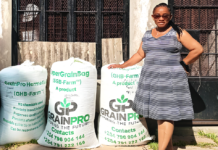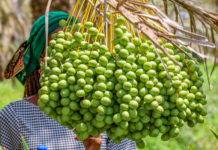Throughout agricultural history, the primary focus has been on increasing crop yields to feed a growing civilization. Farmers must regularly account for factors that would boost or hinder crop production, implementing best management practices and innovative technologies to sustain food supply demands.
The pandemic proved dire for hungry nations. In 2020, approximately 2.3 billion people were food insecure, in which 21% of Africa’s population were malnourished — nearly twice as much as anywhere else in the world.
By 2050, the United Nations (UN) projects that the global population will reach 9.7 billion people, adding pressure on farmers to increase crop yields significantly. In places like Africa, increasing efficiency in planting and harvesting is ever more critical.
Solutions for Increasing Crop Yields
Crop yields are the measure of harvested production per unit of land — typically tons per hectare or thousand tons. Most of the time, yields are calculated by dividing production data by the harvested area.
The number of crop yields — wheat, corn, rice and soybean — depends on crop genetics, nutrient absorption and pest prevalence. For farmers, yields greatly quantify their performance.
Africa’s agriculture industry is burdened by climate change, a lack of technology and education, few financial resources and weak policies and infrastructure. Unfortunately, small-scale farmers have felt the most significant impact of excessive heat and droughts as cereal production has decreased by 20% since the 1950s. However, these five sustainable solutions are available to help farmers increase crop yields.
1. Seed Quality
Seed quality is crucial for agricultural productivity. Farmers should opt for certified seeds to increase harvest efficiency. Certified seeds typically cost more, but farmers can rest assured that they’ve met stringent quality control measures and contain protective coatings for optimal growth.
However, sowing quality seeds isn’t the only way to improve crop cultivation. Advanced agricultural technology has increased planting efficiency, as well. For example, innovative seed spreaders allow farmers to cover three acres of seeds in the same time it takes to cover one acre.
2. Streamlined Irrigation
Africa’s climate has warmed faster than the global land and ocean temperatures combined — with 2020 ranking between the third and eighth hottest year on record. That’s why a streamlined irrigation system is critical for boosting harvest efficiency.
Plant development requires a significant amount of water to grow — and in a region critically affected by climate change, irrigation software can help farmers plan for weather and aim for precision irrigation.
The precision irrigation market has a projected growth of $16.44 billion by 2027 due to its ability to optimize crop production using minimal water resources.
3. Pest Management
Pests reproduce rapidly, and an infestation could prove dire for crop yields. Farmers must always be prepared to handle pest problems to save their harvest.
During the 1940s and 1950, frequent pesticide applications led to environmental damage and increased pest populations due to pesticide immunity. Sustainable pest management became a necessity.
Today, alternative pest management preserves healthy crops without synthetic chemicals. Rather than use pesticides, pest-resistant herbs can deter crop-eating organisms from entering and damaging production zones. For example, peppermint plants can keep field mice away while chives and garlic repel Japanese beetles.
4. Smart Fertilization
Fertilizers nourish the soil to boost plant productivity. However, they can also affect soil quality if misused or applied in excess. Keep in mind that one agricultural plot of land could have several areas that require different types of fertilizers in various quantities.
Crop scouting software is an advanced technology that uses satellite imagery to identify trouble spots. The software divides the farm into different zones and delivers data for farmers to issue localized treatments.
Predictions indicate that the crop monitoring technology market will reach $4.4 billion by 2025, improving crop yields with enhanced precision fertilization and preserved soil fertility.
5. Soil Quality
Soil fertility is a critical factor that impacts crop yields and affects the cost of growing one or more plants. High-quality soil contains nutrients and minerals vital to plant growth. Therefore, responsible soil management increases planting and harvesting efficiency.
It’s essential for farmers to monitor soil fertility and practice sustainable crop rotation. Studies demonstrate how crop rotation improves soil structure and organic matter while offering better weed and pest control, boosting nutrient absorption and producing greater yields.
Traditional soil quality testing is costly for farmers — mainly small-scale farmers in resource-poor regions — making cheaper, more accessible soil testing technology critical. Yet, soil testing technology remains in its infancy. As agricultural technology progresses, the development of soil monitoring technology will prove most effective.
Integrative Agricultural Solutions for Improved Efficiency
There isn’t a single method that improves crop production best. Agriculturalist expertise is invaluable for the individual needs of farmland; however, new technology can greatly assist the efficiency of long-term planting and harvesting.

Jane is an agriculture and environmental journalist and the founder and editor-in-chief of Environment.co, where she covers sustainability and eco-friendly living.








